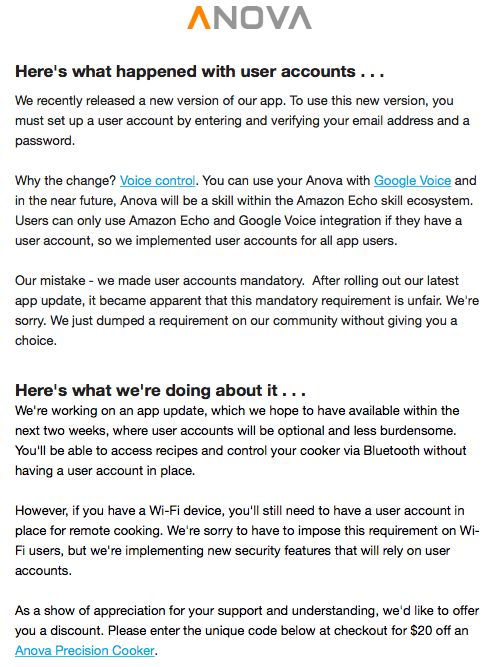“Any sufficiently advanced technology is indistinguishable from magic.”
Arthur C Clarke.
I’ve talked about my technojoy before; the takeoff in a WW2 era bomber via Periscope, the weekend lost to the rabbit hole that is YouTube. It make every SaaS marketing discussion with a client fascinating, as I hear about a new technology solution boiling away in someone’s head.
Yes, I’m captivated by the change that new, fast-moving technology is bringing to a world that already seems as up to date as it could ever possibly be. But exactly how that technology works? Most of the time it’s like magic – you can never quite work out how the magician does it.
It’s always been the way; you just can’t have superior science and innovation without some leaps in development that will be outside the realm of comprehension except a few hundred people in the world, at most.
And most likely those few hundred people probably won’t be your customers. They probably won’t even know your customers. If you’re like most SaaS companies, your customers will work in an office analysing data, or in a lab conducting routine quality control experiments, or use your software to help keep themselves organised and efficient. They are completely absorbed with their own problems, and fundamentally disinterested in how the technology actually works.
As a SaaS product provider you are developing exciting solutions to these problems – solutions which have never existed before. But as end users, we need context; anchored in something that’s meaningful to us so we can understand how this new technology is going to help in our world. This means making your SaaS marketing less product-centric, and more about the humans using it.
This goes beyond just ‘humanising’ your SaaS marketing though.
While I still get a kick out of MailChimp’s chirpy ‘high five’ message when I send out a new email, consider instead of making your marketing ‘human-shaped’ rather than just humanising it.
Humanising is where product marketing is approachable, familiar and a proxy for the type of real human-to-human contact that is either impractical, unnecessary or simply not cost effective to provide.
Beware though; when we focus on trying to humanise our marketing, we begin to rely on technology to provide insights about people, rather than careful and direct observation. Marketing automation starts to replace personal relationships and conversations. SasS product companies outsource onboarding and user support to clever bots, which almost, but not completely, convince us that they are real. Big data rather than small, memorable moments.
Making your SaaS marketing human-shaped on the other hand, is akin to making a glove to exactly fit that hand. It requires knowledge of its exact size and outline, and the way the hand needs to move to allow for a design that offers the perfect fit.
What does this mean? Consider this example I recently from Anova, about a sous vide I recently purchased. Determining that having a user account for the app required to control the appliance could provide some additional benefits, they made it mandatory for all users. Cue predictable internet drama, as many customers protested.
So, rather than writing what is arguably a well-meaning and well explained email about your new requirements, consider the impact on your users – the humans behind the tech. Think of their experience – whether there are cases where your requirements will cause an inconvenience, be unnecessary or unwelcome to your customers. It would save you having to backtrack, offer an apology…and a discount.

Being human-shaped when it comes to SaaS marketing means not mistaking data for insights
Combing data will let you down eventually. It will miss the gut feelings that have seen even the most rational of us turn away from otherwise seemingly sensible decisions for no apparent reason other than it just didn’t feel right. New Coke anyone?
So if you apply this to your SaaS marketing strategy, you need to make sure you have developed:
-
Deeper customer segmentation
Focusing on the individual people and roles that you are targeting, not just at industry or a type of company level. Be sure to Include not only final decision-makers but less senior staff who are internal influencers. They may be the ones who are experiencing the problems and can champion up internally, or they may be checkpoints along the way – procurement, legal, IT – all of whom may have a say or a veto in the buying process.
-
Robust customer personas
Base your personas on real interactions and interviews with people. This may not actually require any additional research. These customer experience learnings may already be in your business, and just need to be identified, distilled, and used.
-
Customer journey mapping
Explore and uncover the full path of each customer persona from awareness to conversion, considering their questions, barriers and motivations at each stage.
-
Use cases pulled from real customer interactions
Part of the joy of developing tech solutions is the inventiveness that customers apply to its use; observing this will improve the user experience and relevance of your product exponentially.
With the complexity of new SaaS technology, does it feel like you need to devote all your marketing to explaining how it all works?
Even once you’ve gathered all these learnings, you may feel that the real challenge is still remains; explaining exactly how your product works. But that level of detail – the specifications, the machinations – matters less to your customers than a clear understanding of how it will remove friction from their lives. Building that human-shaped aspect into your solution and your marketing will require a level of critical thinking,
So use the comparison to magic to your advantage. Magic tricks have always captivated us, made us curious. And not because we’re all focused on trying to work out how the trick is done. Sure, we may try to watch for the sleight of hand, the card up the sleeve. But in the end we all prefer to settle back into our seat and lose ourselves in the wonder. We want the performance and the ‘wow!’, not the explanation.
So when your technology is so complex that, ‘bunch of flowers’ is as much as we can understand by way of instructions, give the people what they want.
Customers either want a pain killer, or a vitamin. They don’t care that the aspirin they are downing to deal with that pounding headache was synthesised from the willow tree, or that most of what’s in the vitamin will end up being flushed down the drain (although perhaps they should). They buy relief. They buy the promise of better performance, of a longer, more healthy life. And how that all works – well, feel free to keep that under your hat.
Image via Flickr CC/Michel Filion




